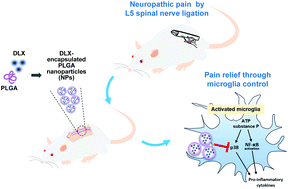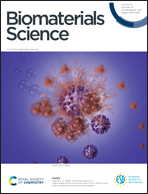Application of PLGA nanoparticles to enhance the action of duloxetine on microglia in neuropathic pain
Abstract
Duloxetine (DLX) is a selective serotonin and noradrenaline reuptake inhibitor (SNRI) used for the treatment of pain, but it has been reported to show side effects in 10–20% of patients. Its analgesic efficacy in central pain is putatively related to its influence on descending inhibitory neuronal pathways. However, DLX can also affect the activation of microglia. This study was performed to investigate whether PLGA nanoparticles (NPs), which are expected to enhance targeting to microglia, can improve the analgesic efficacy and limit the side effects of DLX. PLGA NPs encapsulating a low dose of DLX (DLX NPs) were synthesized and characterized and their localization was determined. The analgesic and anti-inflammatory effects of DLX NPs were evaluated in a spinal nerve ligation (SNL)-induced neuropathic pain model. The analgesic effect of DLX lasted for only a few hours and disappeared within 1 day. However, DLX NPs alleviated mechanical allodynia, and the effect was maintained for 1 week. DLX NPs were localized to the spinal microglia and suppressed microglial activation, phosphorylation of p38/NF-κB-mediated pathways and the production of inflammatory cytokines in the spinal dorsal horn of SNL rats. We demonstrated that DLX NPs can provide a prolonged analgesic effect by enhanced targeting of microglia. Our observations imply that DLX delivery through nanoparticle encapsulation allows drug repositioning with a prolonged analgesic effect, and reduces the potential side effects of abuse and overdose.



 Please wait while we load your content...
Please wait while we load your content...